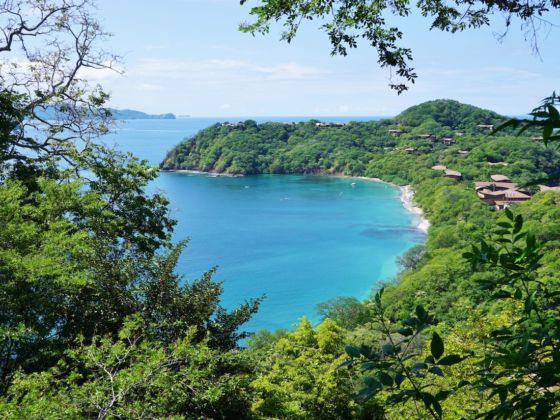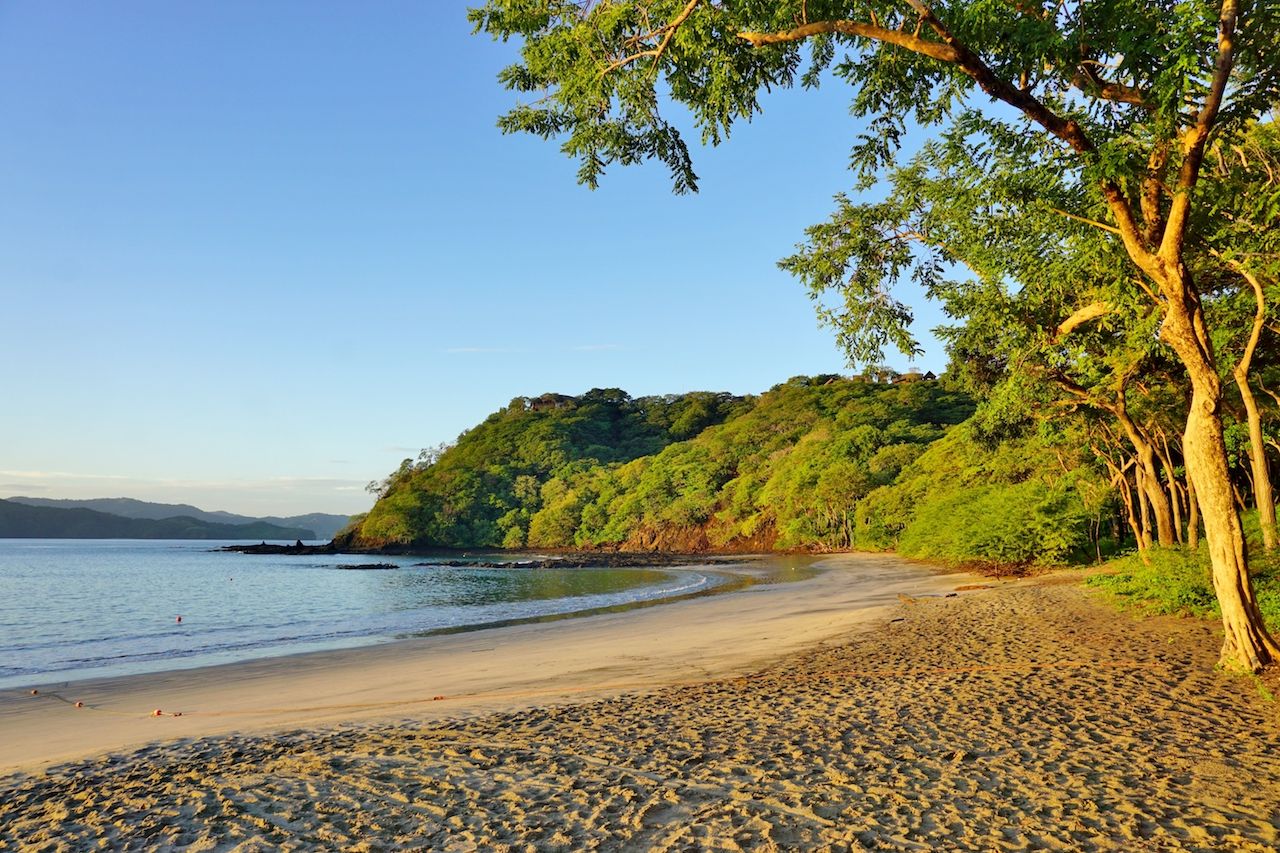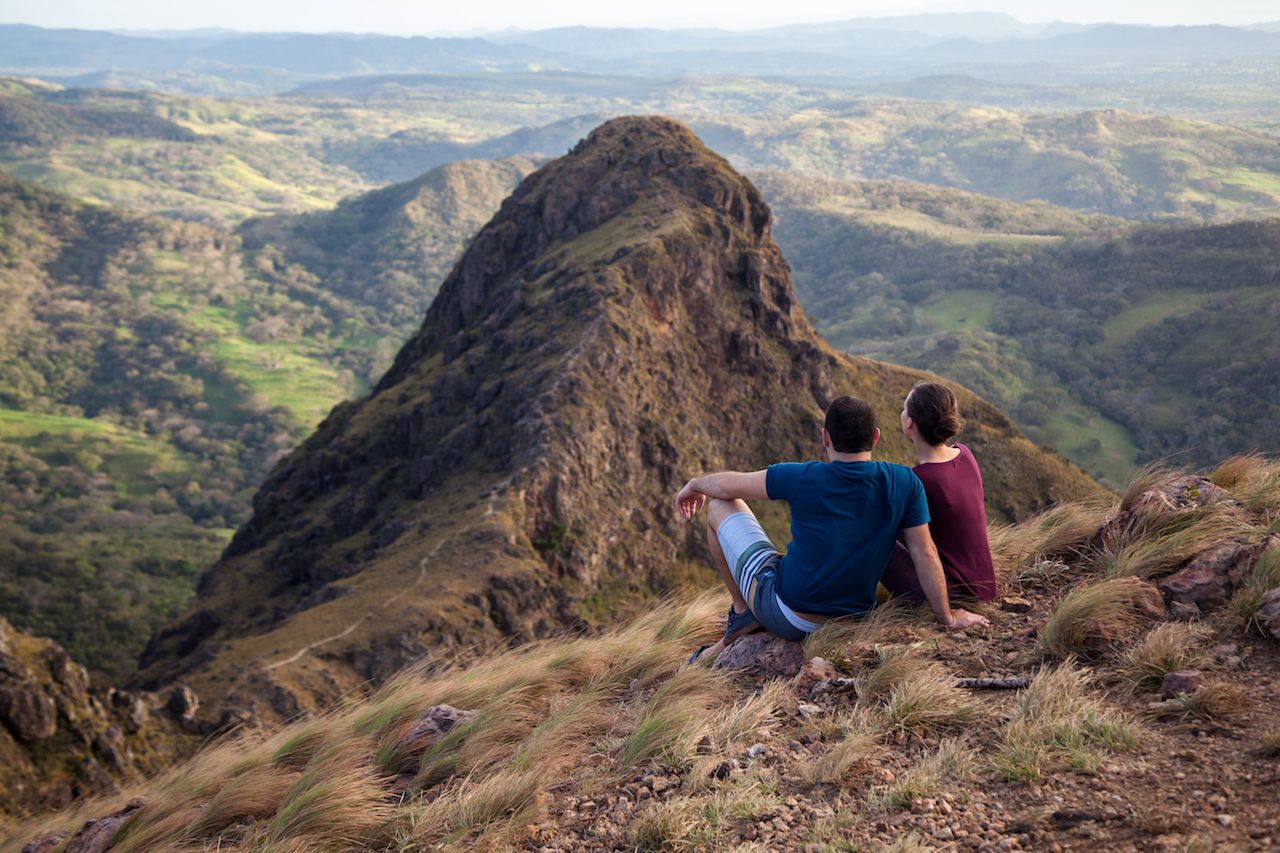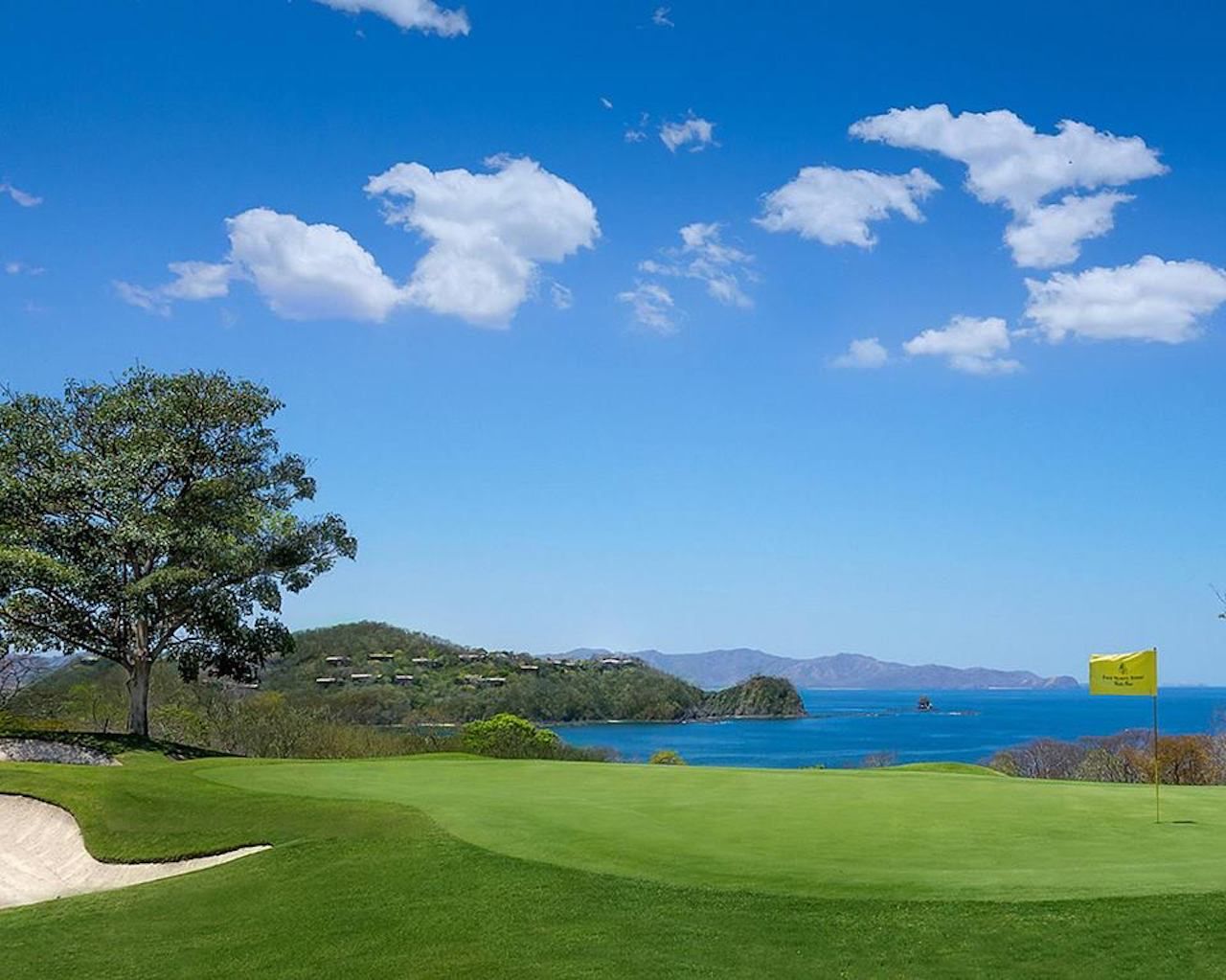Jetting out from the northwest corner of Costa Rica’s Guanacaste Province into the Gulf of Papagayo is Peninsula Papagayo. The region, located fewer than 40 minutes from the Liberia International Airport, may be known for its high-end luxury resorts — but it enjoys some of the best year-round weather in Costa Rica and is heavily protected by the country’s strict environmental laws. The result is an eco-friendly playground of high-end resorts bursting with wildlife, relaxing beaches, tropical forest, and an endless supply of outdoor options. Here’s why Peninsula Papagayo is an outdoor lover’s dream that’s worth the splurge.

Costa Rica’s Peninsula Papagayo Is the Perfect Balance of Outdoor Adventure and Luxury
Private land means less-busy beaches.

Photo: EQRoy/Shutterstock
Although Peninsula Papagayo is comprised of 1,400 acres of private land, all beaches in Costa Rica are public. You can access beautiful beaches like Playa Nacascolo, Playa Manzanillo, Playa Blanca, and Playa Cabuyal, and the private land means they’re less crowded than many other areas. Also, with the area’s protected topography of lush green coves, waves along the peninsula’s 30 beaches are typically gentle. This makes them great for families with small children and keeps the waters warm year round.
Playa Nacascolo is a serene, lake-like haven sheltered inside Culebra Bay. Because it isn’t directly connected to one of the peninsula’s resorts, the beach offers a more natural feel as the calm waters gently wash up on the sand with dense tropical forest in the background. If the sun gets to be too much, seek shade under a nearby tree. The best part is that Playa Nacascolo is accessible via free shuttle bus from 8:00 AM to 5:00 PM daily.
The options for water sports are endless.

Photo: riekephotos/Shutterstock
Just because the waves in this area are calmer doesn’t mean you can’t have fun in the water. More than 20 dive sites dot the Gulf of Papagayo, including the popular Monkey’s Head rock — appropriately named for the shape it resembles — off the coast of the Four Seasons Costa Rica. Several species of rays, including spotted eagle rays, are seen here as well as large schools of fish. The area’s volcanic history created an endless supply of nooks and crannies among the coral for fish and other tropical creatures to hide in and swim through. Besides a colorful supply of fish, you might spot bull sharks, manta rays, and octopus among the gulf’s waters.
The calm sea is ideal for casual exploring via kayak or canoe. Paddle through the open waters and explore nearby secluded beaches like Playa Huevo and Playa Palmares, which are only accessible by boat. Deep-sea fishing is also popular with marlin, sailfish, and roosterfish all common to these waters.
Surfing is certainly an option off the peninsula — particularly for beginners — but more experienced surfers typically venture elsewhere. Top options are Playa Grande; Playa Tamarindo, a popular spot equally fun for novice and expert wave riders; and Witch’s Rock, one of the best surf breaks in the country.
Hiking trails abound with national parks a day-trip away.

Photo: Wollertz/Shutterstock
If the coastline isn’t your cup of tea, Peninsula Papagayo has 13 miles of trails ideal for hiking or biking among a plethora of wildlife in one of the few remaining tropical dry forests on the planet. Paths vary from easy walking trails near roads to tougher hikes deeper in the forest. Mountain biking is more rugged on the unpaved dirt paths.
No matter which path you pick, keep your eyes and ears peeled for monkeys chattering, toucans chirping, and the sheer beauty of many of the 1,500 species of orchids native to Costa Rica. Barra Honda National Park, Guanacaste National Park, Santa Rosa National Park, and Rincon de la Vieja National Park are all a day-trip away, as well.
You can do your best Superman impression above the forest.

Photo: Wollertz/Shutterstock
Fun fact: Modern zip-lining was made popular in the 1970s by wildlife biologists studying the forests of Costa Rica. This mode of transportation not only gave them a bird’s-eye view of what they were surveying but also didn’t disrupt the environment, resulting in the eco-friendly zip-line tours we’re familiar with today.
Diamante Eco Adventure Park, located near Matapalo Beach, is a one-stop shop for adventure and home to Costa Rica’s longest oceanfront zip-line. Soar high above the treetops with the ocean in the background on the park’s zip-line course, which features a “Superman” line where you lay on your stomach while flying (faster than a speeding bullet) toward the coastline. The course also includes a mini freefall, as well as an Indiana Jones-esque hanging bridge over crocodiles located in the park’s animal sanctuary.
Wildlife sanctuaries are close by, too.

Photo: Inspired By Maps/Shutterstock
There are plenty of options to see wildlife throughout Costa Rica, whether you’re snorkeling, swimming, or visiting one of the many government-regulated (SINAC) conservation areas. Among its many features, Diamante Eco Adventure Park is home to an animal sanctuary where you can learn about the country’s fauna by walking through a butterfly observatory; watching jaguars, pumas, and monkeys roam their habitats; and even meeting a local celebrity: Lucy, a two-toed sloth. The peninsula is also working with Costa Rican government agencies to open a macaw sanctuary to help the unfortunately endangered bird species thrive and survive in its homeland.
You can play an Arnold Palmer Signature golf course.

Photo: Four Seasons Resort Costa Rica at Peninsula Papagayo/Facebook
For a more relaxing activity, depending on your handicap and possible temper, the area offers a unique golf experience. Located within the Four Seasons Resort, the Ocean Course at Peninsula Papagayo is an Arnold Palmer Signature Golf Course that has also been named one of the “Top 100 Courses Outside the United States” by Golf Digest. This 18-hole, par-72 championship course sits on the tip of the peninsula.
Continuing the trend of wildlife conservation throughout the country, the Ocean Course is a Certified Audubon Cooperative Sanctuary. Enjoy the local trees and flowers while keeping your eyes open for birds and white-faced monkeys nearby. Don’t forget to focus on your golf game, too.
And you can always just relax… poolside.

Photo: Planet Hollywood
With Peninsula Papagayo chock-full of all-inclusive resorts, the options for poolside lounging are endless. Sure the Four Seasons might be over $1,000 per night for a couple, but come during the summer months, and the Andaz Costa Rica can be as low as $300 per night. While the rainy season runs from May to October, Peninsula Papagayo is in the drier northwest corner of Costa Rica. When the rains do come, they are usually only in the afternoons or evenings.
The newly opened Planet Hollywood Beach Resort is also less than half the cost of the Four Seasons and offers up two pools and a hot tub surrounded by lounge chairs and private cabanas. There are two pool bars — Point Break and Point Break: The Sequel — so getting drinks is just as accessible in the water as it is poolside.
Since most houses on the peninsula are high-end villas, Airbnbs are also pricey. However, we found a three-bedroom Airbnb apartment in the Marina Papagayo that sleeps six, working out to $163 nightly per person. With the Peninsula Papagayo’s quiet beaches, green forests, protected waters, and endless outdoor options, you might find it’s worth the splurge.